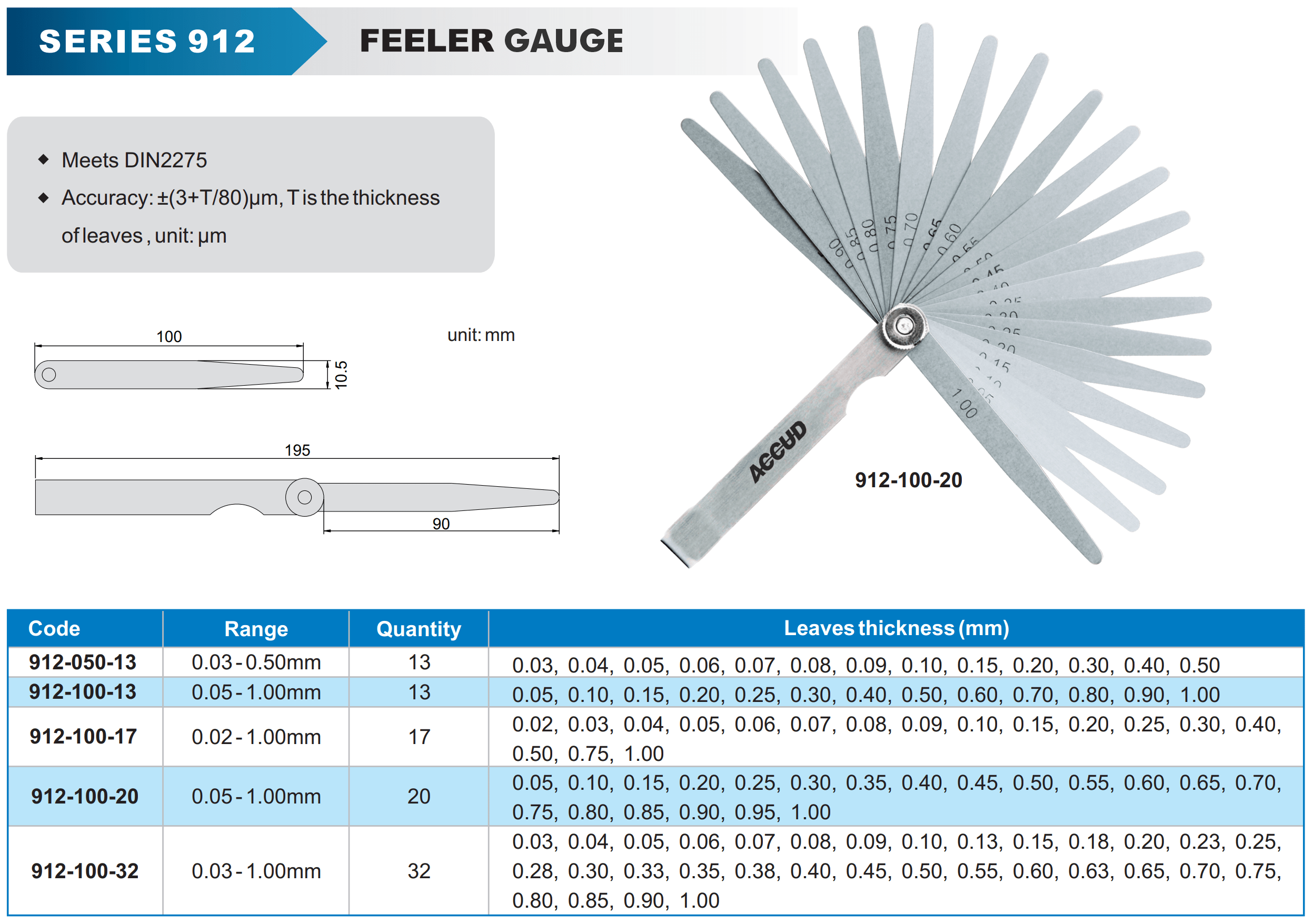FEELER GAUGE 100MM 0.05 - 1.00MM 20 LEAVES DIN2275
In Stock Soon
FEELER GAUGE 100MM 0.05 - 1.00MM 20 LEAVES DIN2275
- Stock: In Stock Soon
- Model: AC912-100-20
- Weight: 0.27kg
- Pack Dim: 11.00mm x 2.50mm x 2.50mm
- UPC: 6009600403086
Price:
R 310.56
Ex VAT: R 270.05
New Expected Date :
- 18/04/2025








